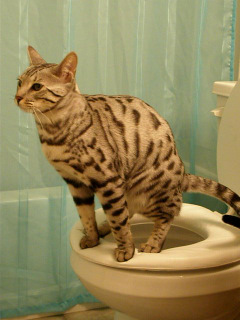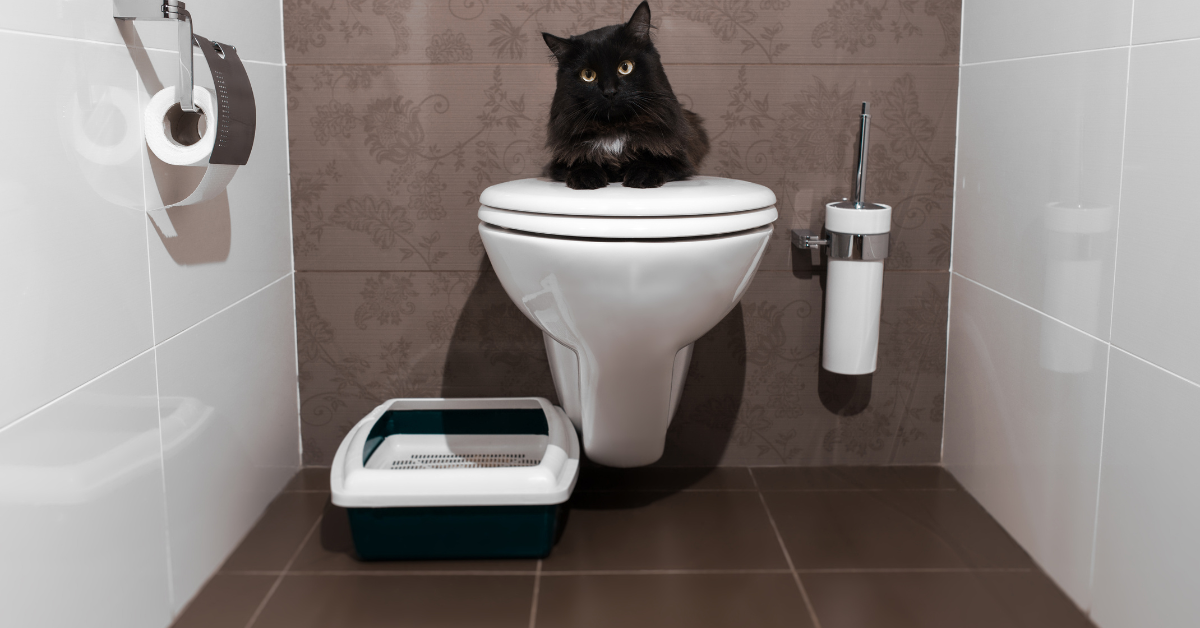Exploring Why Animal Waste Has to Not Be Flushed Down the Toilet
Exploring Why Animal Waste Has to Not Be Flushed Down the Toilet
Blog Article
Each person may have their own unique perception involving Don't Flush Your Pets Poo Down The Loo, Vet Warns.

When it comes to throwing away waste, particularly animal waste, many people typically turn to the convenient alternative of flushing it down the commode. Nonetheless, this relatively easy remedy can have major consequences for the atmosphere and public health. In this write-up, we'll check out why flushing animal waste down the toilet is a bad idea and provide alternative approaches for correct disposal.
Intro
Appropriate waste disposal is crucial for maintaining environmental sustainability and public health. While it might appear safe to purge animal waste down the commode, it can result in various concerns, both for the atmosphere and human well-being.
Dangers of flushing pet waste
Environmental effect
Purging pet waste introduces hazardous microorganisms and microorganisms right into waterways, which can negatively influence marine ecological communities. These microorganisms can pollute water sources and harm aquatic life, disrupting delicate ecological communities.
Public health issues
Animal waste includes unsafe germs such as E. coli and Salmonella, which can posture significant health and wellness risks to human beings. Flushing animal waste down the bathroom can contaminate water products, resulting in the spread of diseases and infections.
Alternatives to flushing
Instead of flushing animal waste down the toilet, there are several alternative disposal methods that are much more environmentally friendly and hygienic.
Composting
Composting animal waste is an eco-friendly means to deal with it. By composting, raw material is broken down into nutrient-rich dirt, which can be made use of to feed yards and plants.
Landfill disposal
Throwing away animal waste in a land fill is another choice. While not as eco-friendly as composting, it is a much safer alternative to flushing, as it avoids the contamination of water sources.
Family pet waste disposal systems
There are specific animal waste disposal systems available that safely and hygienically take care of pet waste. These systems frequently use enzymes to break down waste and get rid of smells.
Actions to proper animal waste disposal
To make sure appropriate disposal of pet waste, follow these actions:
Scooping and landing waste
Frequently scoop and bag pet waste using biodegradable bags. This prevents waste from infecting the environment.
Making use of assigned waste containers
Dispose of bagged animal waste in assigned waste containers, such as garden compost bins or garbage dump containers. Stay clear of flushing it down the commode whatsoever prices.
Cleansing litter boxes and pet locations on a regular basis
On a regular basis clean litter boxes and pet locations to avoid the build-up of waste and bacteria. Usage pet-safe cleaning products to maintain health.
Advantages of proper disposal approaches
Embracing appropriate disposal methods for pet waste uses numerous advantages:
Reduced environmental pollution
Proper disposal approaches reduce the risk of environmental pollution, safeguarding rivers and ecological communities from contamination
Lessened danger of water contamination.
By staying clear of flushing pet waste down the commode, the threat of water contamination is significantly reduced, protecting public health.
Boosted hygiene and hygiene
Proper disposal techniques promote much better hygiene and health, creating a much safer atmosphere for both humans and pets.
Final thought
To conclude, purging pet waste down the toilet is dangerous to the environment and public health. By embracing alternative disposal techniques and following correct waste administration practices, we can minimize the adverse influence of pet waste and add to a cleaner, healthier world.
Why You Should Never Flush Cat Poop Down the Toilet
A rose by any other name might smell as sweet, but not all poop is created equal. Toilets, and our sewage systems, are designed for human excrement, not animal waste. It might seem like it couldn’t hurt to toss cat feces into the loo, but it’s not a good idea to flush cat poop in the toilet.
First and foremost, assuming your cat uses a litter box, any waste is going to have litter on it. And even the smallest amount of litter can wreak havoc on plumbing.
Over time, small amounts build up, filling up your septic system. Most litter sold today is clumping; it is made from a type of clay that hardens when it gets wet. Ever tried to scrape old clumps from the bottom of a litter box? You know just how cement-hard it can get!
Now imagine just a small clump of that stuck in your pipes. A simple de-clogger like Drano isn’t going to cut it. And that means it’s going to cost you big time to fix it.
For an amusing, graphic tale of what happens when you flush too much litter down the toilet all at once, take a few minutes to read Gene Weingarten’s 2017 Washington Post column “So that’s what happens when you flush cat litter down the toilet.”
Parasitic Contamination
Believe it or not, your healthy kitty may be harboring a nasty parasite. Only cats excrete Toxoplasma in their feces. Yet it rarely causes serious health issues in the cats that are infected. Most people will be fine too if infected. Only pregnant women and people with compromised immune systems are at risk. (If you’ve ever heard how women who are expecting are excused from litter cleaning duty, Toxoplasma is why.)
But other animals may have a problem if infected with the parasite. And human water treatment systems aren’t designed to handle it. As a result, the systems don’t remove the parasite before discharging wastewater into local waterways. Fish, shellfish, and other marine life — otters in particular — are susceptible to toxoplasma. If exposed, most will end up with brain damage and many will die.
Depending on the species of fish, they may end up on someone’s fish hook and, ultimately on someone’s dinner plate. If that someone has a chronic illness, they’re at risk.
Skip the Toilet Training
We know there are folks out there who like to toilet train their cats. And we give them props, it takes a lot of work. But thanks to the toxoplasma, it’s not a good idea.
Leave the toilet to the humans, and accept your future litter cleaning duty.

On a regular basis clean litter boxes and pet locations to avoid the build-up of waste and bacteria. Usage pet-safe cleaning products to maintain health.
Advantages of proper disposal approaches
Embracing appropriate disposal methods for pet waste uses numerous advantages:
Reduced environmental pollution
Proper disposal approaches reduce the risk of environmental pollution, safeguarding rivers and ecological communities from contamination
Lessened danger of water contamination.
By staying clear of flushing pet waste down the commode, the threat of water contamination is significantly reduced, protecting public health.
Boosted hygiene and hygiene
Proper disposal techniques promote much better hygiene and health, creating a much safer atmosphere for both humans and pets.
Final thought
To conclude, purging pet waste down the toilet is dangerous to the environment and public health. By embracing alternative disposal techniques and following correct waste administration practices, we can minimize the adverse influence of pet waste and add to a cleaner, healthier world.
Why You Should Never Flush Cat Poop Down the Toilet
A rose by any other name might smell as sweet, but not all poop is created equal. Toilets, and our sewage systems, are designed for human excrement, not animal waste. It might seem like it couldn’t hurt to toss cat feces into the loo, but it’s not a good idea to flush cat poop in the toilet.
First and foremost, assuming your cat uses a litter box, any waste is going to have litter on it. And even the smallest amount of litter can wreak havoc on plumbing.
Over time, small amounts build up, filling up your septic system. Most litter sold today is clumping; it is made from a type of clay that hardens when it gets wet. Ever tried to scrape old clumps from the bottom of a litter box? You know just how cement-hard it can get!
Now imagine just a small clump of that stuck in your pipes. A simple de-clogger like Drano isn’t going to cut it. And that means it’s going to cost you big time to fix it.
For an amusing, graphic tale of what happens when you flush too much litter down the toilet all at once, take a few minutes to read Gene Weingarten’s 2017 Washington Post column “So that’s what happens when you flush cat litter down the toilet.”
Parasitic Contamination
Believe it or not, your healthy kitty may be harboring a nasty parasite. Only cats excrete Toxoplasma in their feces. Yet it rarely causes serious health issues in the cats that are infected. Most people will be fine too if infected. Only pregnant women and people with compromised immune systems are at risk. (If you’ve ever heard how women who are expecting are excused from litter cleaning duty, Toxoplasma is why.)
But other animals may have a problem if infected with the parasite. And human water treatment systems aren’t designed to handle it. As a result, the systems don’t remove the parasite before discharging wastewater into local waterways. Fish, shellfish, and other marine life — otters in particular — are susceptible to toxoplasma. If exposed, most will end up with brain damage and many will die.
Depending on the species of fish, they may end up on someone’s fish hook and, ultimately on someone’s dinner plate. If that someone has a chronic illness, they’re at risk.
Skip the Toilet Training
We know there are folks out there who like to toilet train their cats. And we give them props, it takes a lot of work. But thanks to the toxoplasma, it’s not a good idea.
Leave the toilet to the humans, and accept your future litter cleaning duty.

We hope you enjoyed our excerpt on Why you should never flush dog poop down the toilet. Thank you for finding the time to read through our piece of content. For those who enjoyed reading our blog post plz don't forget to share it. Thanks a lot for taking the time to read it.
Call Report this page